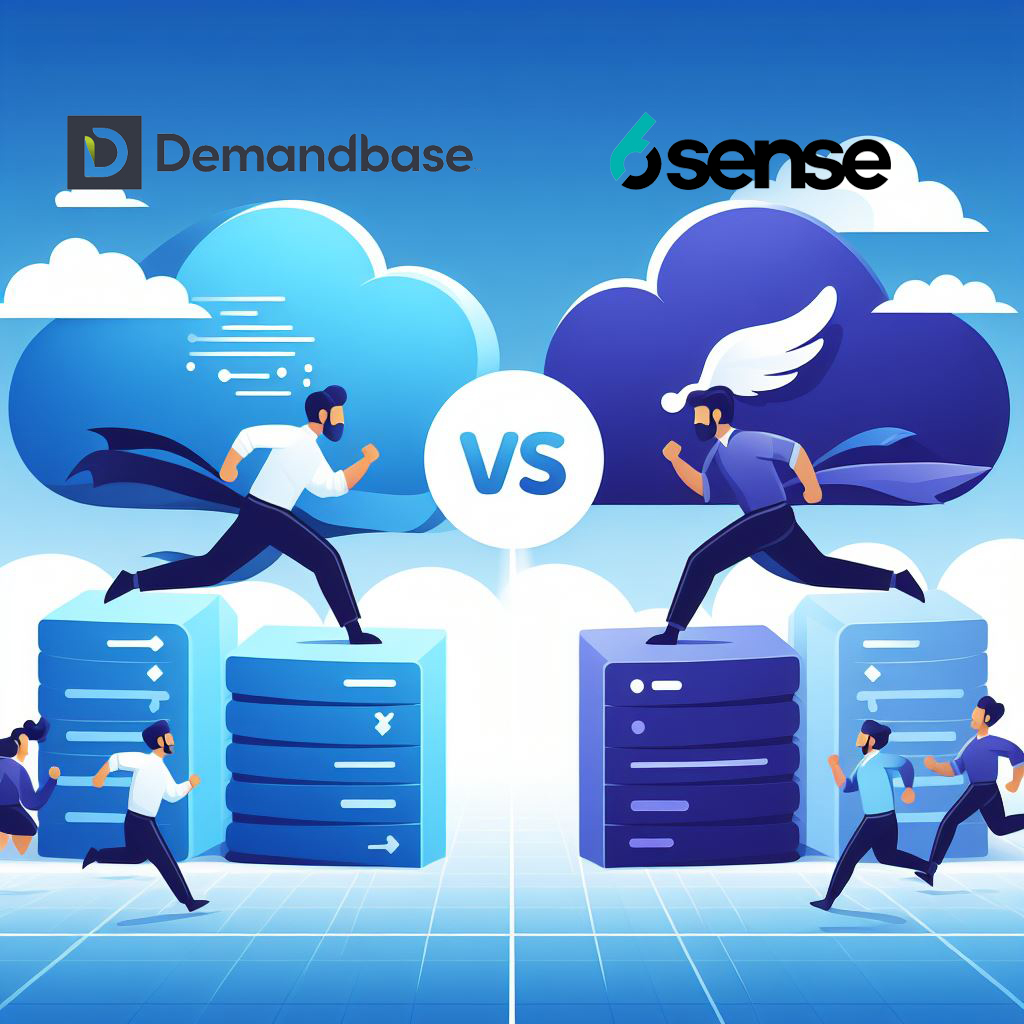6Sense and Demandbase, Which One to Choose for ABM?
account-based-marketing, AI, Digital marketing
In the cutthroat world of Account-Based Marketing (ABM), two titans stand out: Demandbase and 6sense. Both offer robust solutions to identify, engage, and convert your most valuable accounts. But with overlapping functionalities, choosing the right one can be a puzzle. Let’s delve deeper, comparing features, strengths, weaknesses, and pricing to guide your ABM strategy:
Feature face-off:
- Account Identification:
- Demandbase: Boasts a vast database of companies and contacts, allowing for highly targeted filtering based on firmographics, technographics, and industry.
- 6sense: Utilizes AI to predict buying intent and identify accounts actively researching solutions relevant to your offering.
- Campaign Management:
- Demandbase: Offers campaign creation tools, budget allocation, and performance measurement within its platform. Integrates seamlessly with popular marketing automation tools for multi-channel execution.
- 6sense: Provides campaign management features but excels in lead nurturing through its integrated platform. Integrates with various marketing automation tools as well.
- Lead Scoring and Prioritization:
- Demandbase: Assigns lead scores based on pre-defined criteria, allowing you to prioritize accounts based on fit and engagement.
- 6sense: Leverages AI to predict which accounts are most likely to convert, prioritizing efforts for maximum impact. Offers more granular scoring based on real-time buying signals.
- Reporting and Analytics:
- Demandbase: Delivers comprehensive reports on campaign performance, account engagement, and ROI.
- 6sense: Provides robust analytics with a focus on revenue attribution and demonstrating the impact of ABM efforts on pipeline and sales.
Strengths and weaknesses:
- Demandbase:
- Strengths:
- Unmatched Data Depth: Demandbase boasts a vast database of companies and contacts, allowing for highly targeted account selection.
- Intent Activation: Their platform analyzes buying signals to identify accounts actively researching solutions like yours, pinpointing in-market opportunities.
- Marketing Automation Integration: Seamlessly integrates with popular marketing automation platforms for streamlined campaign execution.
- Weaknesses:
- Steeper Learning Curve: The comprehensive feature set can be overwhelming for beginners, requiring more time for onboarding and training.
- Limited Lead Management: While it excels at account identification, some reviewers find its lead management features less robust compared to 6sense.
- Strengths:
- 6sense:
- Strengths:
- Predictive Targeting: Leverages AI to predict which accounts are most likely to convert, prioritizing efforts for maximum impact.
- Streamlined Lead Management: Provides a centralized platform for managing leads throughout the ABM funnel, fostering smoother collaboration between sales and marketing teams.
- User-Friendly Interface: Generally praised for its intuitive design, making it easier for users to navigate and utilize the platform’s features.
- Weaknesses:
- Data Depth: While their data is comprehensive, it might not be as vast as Demandbase’s, potentially limiting targeting options for very specific niches.
- Pricing: Can be costlier than Demandbase, especially for larger enterprises with complex ABM needs.
- Strengths:
Pricing:
- Demandbase: Pricing varies based on features and data requirements. Generally, it’s considered more cost-effective for smaller to mid-sized businesses.
- 6sense: Pricing can be costlier than Demandbase, especially for larger enterprises with complex ABM needs. Additionally, it offers tiered pricing based on features and usage.
The verdict: It depends on your needs
There’s no clear winner, as the ideal platform hinges on your specific ABM goals and resources. But here’s a cheat sheet to guide your decision:
- Choose Demandbase if:
- You prioritize deep account intelligence and data-driven targeting.
- You have a dedicated ABM team with the bandwidth for a comprehensive platform.
- Seamless integration with your existing marketing automation tools is crucial.
- Choose 6sense if:
- You value AI-powered sales and marketing alignment with predictive insights.
- Streamlined lead management and a user-friendly interface are top priorities.
- Your budget might be tighter, and you require a platform that scales effectively.
Beyond the battlefield: alternative solutions
While Demandbase and 6sense dominate the ABM space, other contenders offer compelling options:
- Terminus: Provides a robust ABM platform with account-based orchestration features.
- Leadify.io: Focuses on identifying buying committees within target accounts.
- Sangram: Offers a comprehensive ABM suite with a strong focus on personalization.
Choosing Your ABM champion:
The ideal platform hinges on your specific needs and resources. Therefore, consider these factors:
- ABM Maturity: If you’re new to ABM, 6sense’s user-friendly interface and AI-powered guidance might be a good starting point. Also, for established ABM programs, Demandbase’s deep data and customization options offer a powerful toolkit.
- Data Requirements: Highly targeted B2B niches might benefit more from Demandbase’s extensive data. For broader audience targeting, 6sense’s AI-powered intent data can be sufficient.
- Team Expertise: A dedicated ABM team can navigate Demandbase’s comprehensive features. If your team is smaller, 6sense’s user-friendliness can be a valuable asset.
- Budget: Carefully evaluate both platforms’ pricing models based on your needs and team size.
Finally, the best ABM platform is the one that aligns seamlessly with your existing marketing stack, empowers your sales and marketing teams, and fosters a data-driven approach to target high-value accounts.
Further reading:
Find more about using AI tools for data analysis.
- How to Boost Operational Efficiency with AI Agents
- Generative AI is Transforming Content Creation for Digital Marketers
- Leverage AI for Hyper-Personalized Marketing Campaigns in 2025
- 5 Ways AI-Driven Decision-Making Leverage Data to Empower Business Leaders
- How are AI Agents Boosting Inbound Marketing